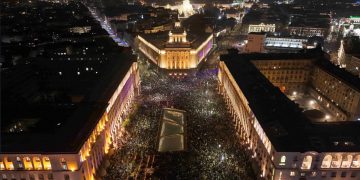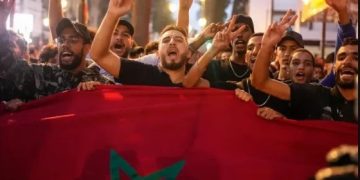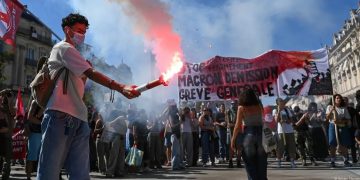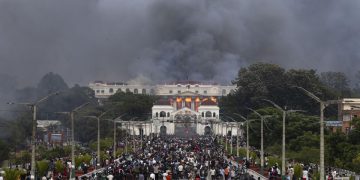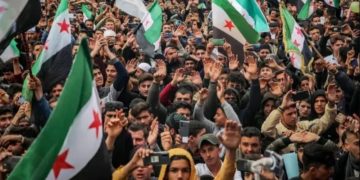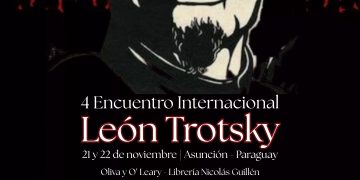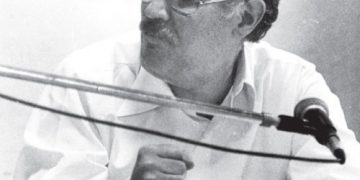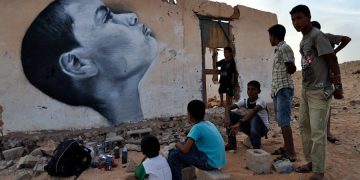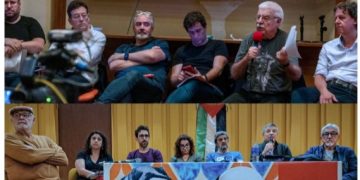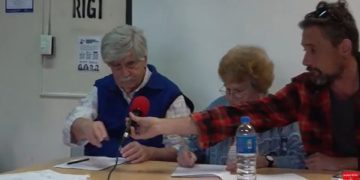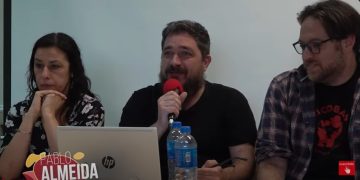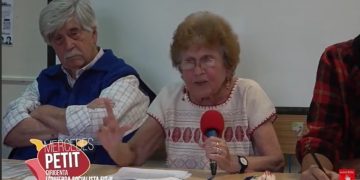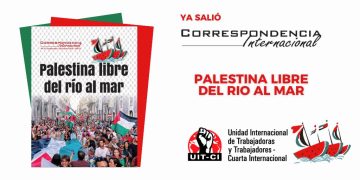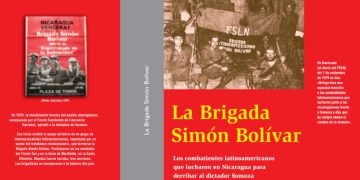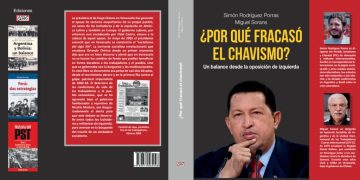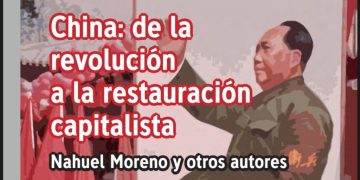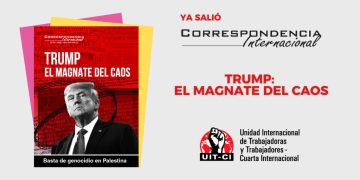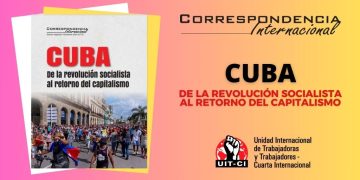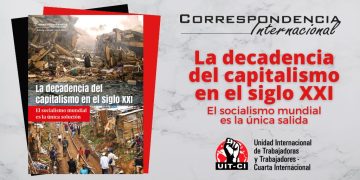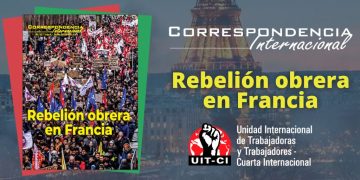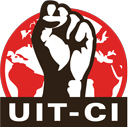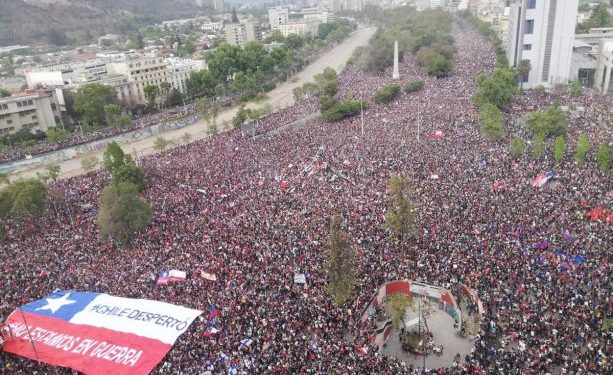Chile: “It’s not 30 pesos, it’s 30 years!”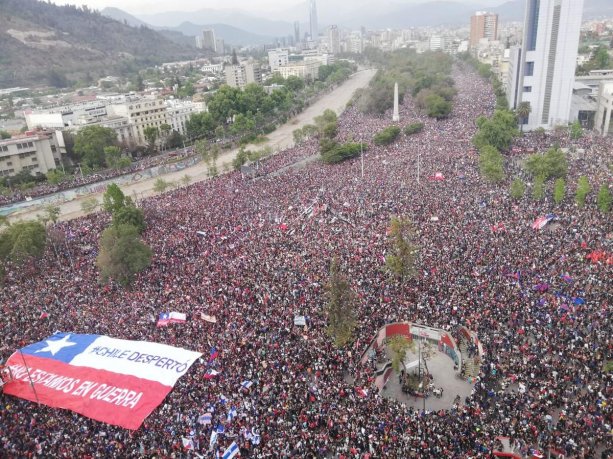 This is one of the many slogans sung in the streets of Santiago. Thirty Chilean pesos were the increase in the subway that unleashed the protest on Friday 18 October. Spokespersons from the government and the right-wing said, “It’s only 30 pesos. Less than 10 cents of a dollar”. But it was the straw that broke the camel’s back, after decades of high social inequality, of a capitalist model that comes from Pinochet’s dictatorship. That is why the youth and the working people have exploded. Millions have been on the streets for over 12 days demanding that Piñera leave and demanding a fundamental change in the country.
This is one of the many slogans sung in the streets of Santiago. Thirty Chilean pesos were the increase in the subway that unleashed the protest on Friday 18 October. Spokespersons from the government and the right-wing said, “It’s only 30 pesos. Less than 10 cents of a dollar”. But it was the straw that broke the camel’s back, after decades of high social inequality, of a capitalist model that comes from Pinochet’s dictatorship. That is why the youth and the working people have exploded. Millions have been on the streets for over 12 days demanding that Piñera leave and demanding a fundamental change in the country.
By Miguel Sorans*, leader of Socialist Left (IS) and the IWU-FI. 30 October 2019
The social uprising in Chile shocked Piñera’s government and the entire bourgeoisie, including imperialism. Until then, they cited the “Chilean model” as an example of “success”. Days before, Piñera said that Chile was an “oasis”. But it is a model of extreme exploitation, a continuation of Pinochet’s dictatorship, through the pact with the system’s political parties such as the Christian Democrats and the Socialist Party, along with the new parties of the Pinochet right (UDI and others). Pinochet imposed the 1980 constitution, which is still in force, and since the 1990s -with the regime of the “Concertation” – the governments of CD-SP-CP or of the right via elections alternate. Before Piñera the “socialist” Bachelet was the president. All maintained this model in favour of national and foreign multinationals, with labour flexibility and the privatisation of all public services from water to education, health and transportation. Guarded by the repression of the military and the carabineros (the famous “pacos”, the name given to the police). In this rebellion, they have already killed 20 people, wounded hundreds and imprisoned thousands. That’s why people came out to say “it’s 30 years,” “Enough” of Piñera and also of the “model”.
Chile is among the ten countries with the greatest inequality in the world. Five per cent of the population with the lowest income is at the same level as in Mongolia or Moldova. The two per cent highest income is at the same level as in Germany. Private pension funds (AFPs) have been a scam. The average pension is less than $200. University students are indebted for life, once graduated (CLARIN data, 24 October).
Chile has changed. The people rebelled
“It’s not a war. Chile woke up,” you see in some placards with which people go to the marches. They are small, handwritten. They responded to Sebastian Piñera’s first statement by saying that they were “at war”. When his wife (Cecilia Morel) said it was like an “alien invasion “, the placards responded with “the alien people for peace, support the Chilean people”. Both had to apologize… and Piñera annulled the increase in the subway fare.
But, to Piñera’s surprise, people continued in the streets and demanded that he and his government must leave, they demand the end of the state of emergency, the military out of the streets, an end to privatisation in education, health, pensions, water and energy. Since Friday 18 October, the masses have not stopped being on the streets. Even ignoring the curfew. The high school students mobilised to the subways but, with the passing of the hours and days, the popular mobilisation generalized. In the neighbourhoods, the pots and pans have defied the curfew. As did the strikes in ports, miners, truckers, health or public employees. Thousands and thousands in the streets all over the country. An undeclared state of a general strike.
People named it: “Chile woke up”. This is the beginning of a revolutionary situation. That is the change that has taken place in Chile. It is a situation where, as Lenin defined it, “the bottoms don’t want and the tops cannot live in the old way”. That is why in Chile a revolutionary mobilisation is underway and questions the power of the “tops” and raises the need for a new power, a government of the workers and the popular sectors.
The historic mobilisation of Friday 25 October
On Friday 25, after a week of marches and protests, the largest popular demonstration in the last 30 years took place. In Santiago, it reached about 1.5 million people. With thousands and thousands in every city and town in the country. That massive march filled Italia Square and the nearby avenues and parks. Human tides came through Alameda and Providencia Avenue, from all the neighbourhoods and communes of Santiago. Young people, workers, women, families, pensioners, doctors, bikers, football fans. There were no political flags. Flags of Chile, of the Mapuche people, of Colo-Colo, of the University of Chile, many green neckerchiefs and those individual placards with all kinds of slogans; “Arrivederci Piñera»; “nationalisation of public services”; “I don’t need sex, the government fucks me every day”; “Bielsa was right”; “Constituent Assembly”; “nationalisation of natural resources”, “direct democracy” or “Revolution”. And they sang the traditional “he who doesn’t jump is a paco (police officer)”.
The impact of mobilisation hit the government hard. They left Piñera on the tightrope. He had to lift the state of emergency and the curfew, renewed much of the cabinet and promised the moon and the stars. But the people started the week on the street demanding that he leave. The masses see they can defeat the government and the model.
A mobilisation that overflowed the leaderships
It’s a spontaneous mobilisation, without a leader. Not even a reformist. From the beginning, the mobilisations took place outside the unions and students’ leadership, in which the CP and the Broad Front (FA) predominate. They are summoned by the networks. It took both the CP and the FA three or four days after the initiation of the popular rebellion to release a statement. They formed a Social Unity Table through which they called for a national strike on 23 and 24. But, although they propose terms of reference against repression, social measures and even a Constituent Assembly, they do not raise “Out with Piñera”, which is the central demand of the masses. Only after the impact of the historic mobilisation on 25 the CP and part of the deputies of the FA propose the possibility of appealing to the “legal” mechanism of the “constitutional accusation” against the president via parliament. A kind of “impeachment” or political trial.
A strong point of the mobilisation is that it is not controlled by the reformist political apparatchiks. That also prevents the government from having with whom to negotiate and seek to appease the mobilisation. But the weak point is, so far, the lack of a revolutionary socialist leadership. And that workers and popular organisations emerge from where the struggle can be coordinated toward the perspective of a government of the workers and the popular sectors.
With this strategic policy, the Movement towards Socialism (MST), Chilean section of the IWU-FI, intervenes in the process (see statement of October 25 at www. uit-ci. org). Promoting the neighbourhood assemblies and other organisms of trade union and student struggle and their coordination. To maintain the mobilisation in the streets and the call for a general strike to put an end to Piñera’s government, for the trial and punishment of the military and civilians responsible for the crimes of repression, for a fundamental change in the country, with a government of the working class and the people that promotes an emergency economic plan for the working people to put an end to misery and privatisations and call for a Free and Sovereign Constituent Assembly to end the Pinochet constitution. To advance on that road, the mobilisation must continue until they oust Piñera.
*He travelled to Chile and took part in the demonstration of 25 October.








